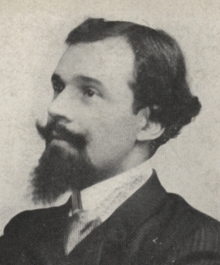Related Research Articles

Élie Ducommun was a Swiss peace activist. He was a Nobel laureate, awarded the 1902 Nobel Peace Prize, which he shared with Charles Albert Gobat.

Charles Albert Gobat was a Swiss lawyer, educational administrator, and politician who jointly received the Nobel Peace Prize with Élie Ducommun in 1902 for their leadership of the Permanent International Peace Bureau.

The International Peace Bureau, founded in 1891, is one of the world's oldest international peace federations. The organisation was awarded the Nobel Peace Prize in 1910 for acting "as a link between the peace societies of the various countries". In 1913, Henri La Fontaine was also awarded the Prize "[For his work as] head of the International Peace Bureau". As of 2012, eleven other Nobel Peace Prize laureates have been members of the IPB.

The Ligue internationale de la paix was created after a public opinion campaign against a war between the Second French Empire and the Kingdom of Prussia over Luxembourg. The Luxembourg crisis was peacefully resolved in 1867 by the Treaty of London but in 1870 the Franco-Prussian War could not be prevented so the league dissolved and refounded as the 'Société française pour l'arbitrage entre nations' in the same year.

Alice Rivaz was a Swiss writer and feminist.

The Mouvement de la Paix is an organisation which promotes a culture of peace initiated by the United Nations. The movement was created in the aftermath of the Second World War by the large resistance movements, particularly those associated with communists, Christians and free-thinkers, and was linked directly to the Mouvement mondial des partisans de la paix whose aim was to struggle for peace.
The Socialist-Communist Union, later renamed the Socialist-Communist Party, was a socialist political party in France between 1923 and 1932.
Martin Brauen is a cultural anthropologist from Bern, Switzerland who specialises in Tibet, the Himalayas and history of religions.

Pierre Brizon was a French teacher, national deputy, internationalist and pacifist. He was subject to violent attacks in the press and parliament for speaking out against the fighting during World War I.

Gabrielle Duchêne was a French feminist and pacifist who was active in the French section of the Women's International League for Peace and Freedom (WILPF).

Jeanne Mélin was a French pacifist, feminist, writer and politician who wrote under the pseudonym Thalès Jehanne. She fought for peace between France and Germany, and for the right of women to vote. She was a candidate for election as President of France in 1947.

Roger Monclin was a French militant pacifist and anarchist. In the inter-war years he edited the pacifist magazine La Patrie humaine. He is known for his book Les damnés de la guerre (1934) in which he shows the misery of ordinary soldiers during World War I (1914–18) forced to fight in impossible conditions.

La mère éducatrice was a feminist anarchist magazine founded by Madeleine Vernet. It was first published in October 1917. Its headquarters was in Levallois-Perret. Madeleine Vernet also edited the magazine. The magazine adopted a pacifist, socialist and educative stance. In line with this approach, it argued that the major way to end war is education. It existed until 1939.
Edmond Potonié (1829–1902), commonly known as Edmond Potonié-Pierre, was a French pacifist.

Marguerite Gobat was a Swiss editor, teacher and pacifist.

Eugénie Hamer was a Belgian journalist, writer and activist. Her father and brother served in the Belgian military, but she was a committed pacifist. Involved in literary and women's social reform activities, she became one of the founders of the Alliance Belge pour la Paix par l'Éducation in 1906. The organization was founded in the belief that education, political neutrality, and women's suffrage were necessary components to peace. She was a participant in the 18th Universal Peace Congress held in Stockholm in 1910, the First National Peace Congress of Belgium held in 1913, and the Hague Conference of the International Congress of Women held in the Netherlands in 1915. This led to the creation of the International Committee of Women for Permanent Peace, subsequently known as the Women's International League for Peace and Freedom (WILPF). Hamer co-founded the Belgian chapter of the WILPF that same year. During World War I, she volunteered as a nurse and raised funds to acquire medical supplies and create an ambulance service.
Colette Reynaud (1872–1965) was a French feminist, socialist and pacifist journalist. In 1917, she was the co-founder and director of the weekly newspaper La Voix des femmes.

The 1901 Nobel Peace Prize was the first peace prize resulting from Alfred Nobel's will to recognize in the preceding year those who "have done the most or the best work for fraternity between nations, for the abolition or reduction of standing armies and for the holding and promotion of peace congresses." It was equally divided between the Swiss humanitarian Henri Dunant (1828–1910) "for his humanitarian efforts to help wounded soldiers and create international understanding" and the French pacifist Frédéric Passy (1822–1912) "for his lifelong work for international peace conferences, diplomacy and arbitration." It was the first of the many times the Nobel Peace Prize has been shared between two or more individuals.
References
- 1 2 3 Grace Brockington; Sarah Hellawell; Daniel Laqua (2023). "Pacifist Journals". In Marysa Demoor (ed.). The Edinburgh Companion to First World War Periodicals. Edinburgh: Edinburgh University Press. p. 352. doi:10.1515/9781474494724-025. ISBN 9781474494724.
- ↑ "Élie Ducommun". Encyclopædia Britannica . 15 February 2023.
- 1 2 "International Peace Bureau Collected Records". TriCollege Libraries. Retrieved 22 February 2023.
- 1 2 Enrica Costa Bona (January–April 2015). "Le bureau international de la paix et les congrès universels (1899-1914)". Il Politico (in French). 80 (1): 93–106. JSTOR 45433359.
- ↑ "Permanent International Peace Bureau. History". Nobel Prize. Retrieved 22 February 2023.
- ↑ "The Online Books Page". International Peace Bureau. Retrieved 22 February 2023.
- ↑ Le mouvement pacifiste: correspondance bimensuelle du Bureau international de la paix à Berne (in French). Impr. Büchler & cie. 1915.